In the realm of kitchen appliances, the hot air cooker stands as a testament to innovation and efficiency. As technology continues to advance, so does the way we cook and the tools we use to do so. This article delves into the intricacies of hot air cooker factories, exploring how these appliances work, the production process, technological advancements, and their impact on the market. We also shed light on the vital role of employee skills and training, and the environmental considerations that guide factory operations. Ultimately, we celebrate the hot air cooker as the heartbeat of modern kitchen appliances, a symbol of progress and culinary excellence.
Introduction to Hot Air Cooker Factories
Nestled within the bustling industrial landscape, hot air cooker factories stand as beacons of innovation and efficiency. These manufacturing hubs are the heart of a burgeoning industry that promises convenience and culinary delight to households around the world. From the smallest kitchenette to the largest commercial kitchen, hot air cookers have become an indispensable appliance, and the factories that produce them are marvels of modern engineering.
The journey of the hot air cooker begins with raw materials, which are meticulously selected and processed to ensure the highest quality. Aluminum, steel, and various plastics are among the key components that make up these versatile appliances. The factory floor is a symphony of activity, where each step is meticulously planned to transform these raw materials into a functional kitchen gadget.
In the heart of these factories, one finds a blend of ancient craftsmanship and cutting-edge technology. The manufacturing process is a delicate dance, where precision and care are paramount. Workers, often clad in protective gear, move with purpose, each one a part of a larger machine that assembles, tests, and packages the hot air cookers.
The first stage of production involves the cutting and shaping of metal sheets into the necessary components for the cooker’s body. These sheets are cut with precision using laser technology, which ensures clean edges and reduces waste. The metal pieces are then bent and formed into the shape of the cooker, a task that requires both strength and precision.
Next, the body of the cooker is assembled. Workers carefully fit the metal parts together, ensuring a tight and secure seal. Here, the importance of quality control cannot be overstated. Each joint is inspected, and any defects are immediately rectified to prevent future issues. This attention to detail is what sets top-tier hot air cooker factories apart from the rest.
Once the body is assembled, the next step is to apply the thermal insulation. This is crucial for the cooker’s efficiency, as it helps retain heat and reduces energy consumption. Insulation material is blown into the cooker’s cavity, creating a barrier that keeps the heat in and the cold out. The process is repeated several times to achieve the desired thickness and uniformity.
The interior of the cooker is then prepped for the cooking chamber. A layer of heat-resistant paint is applied to the inside walls, providing a smooth surface that is easy to clean and prevents food from sticking. This paint is not just any ordinary paint; it must withstand high temperatures and chemical cleaners, making it a vital component of the cooker’s longevity.
With the body and insulation complete, the cooking chamber is fitted with the necessary elements for cooking. These include the heating element, which is designed to distribute heat evenly across the cooking surface, and the control panel, which allows users to adjust the temperature and cooking time. The precision of these components is crucial for the cooker’s performance, and they are carefully mounted and tested.
As the cooker takes shape, it moves through a series of quality checks. Each component is inspected for defects, and the cooker as a whole is tested for functionality. This includes checking the heating element’s performance, the control panel’s responsiveness, and the overall structural integrity of the cooker. Any unit that does not meet the strict standards is flagged for repair or discarded.
The final touches are where the factory’s craftsmanship truly shines. Handles are attached, ensuring they are securely fastened and comfortable to grip. The cooker’s exterior is given a glossy finish, and any branding is applied. This is the moment when the raw materials and hard work come together to create a finished product that is ready to be shipped to markets worldwide.
In the world of hot air cooker factories, attention to detail is the key to success. Every aspect of the manufacturing process is designed to ensure that the end product is reliable, efficient, and user-friendly. These factories are not just places of production; they are centers of innovation, where the art of cooking meets the science of engineering.
From the raw materials to the finished product, the journey of a hot air cooker is a testament to the dedication and skill of the workers within these factories. It’s a reminder that even the simplest of kitchen appliances can be the result of complex and intricate processes, all aimed at bringing convenience and joy to the lives of countless consumers.
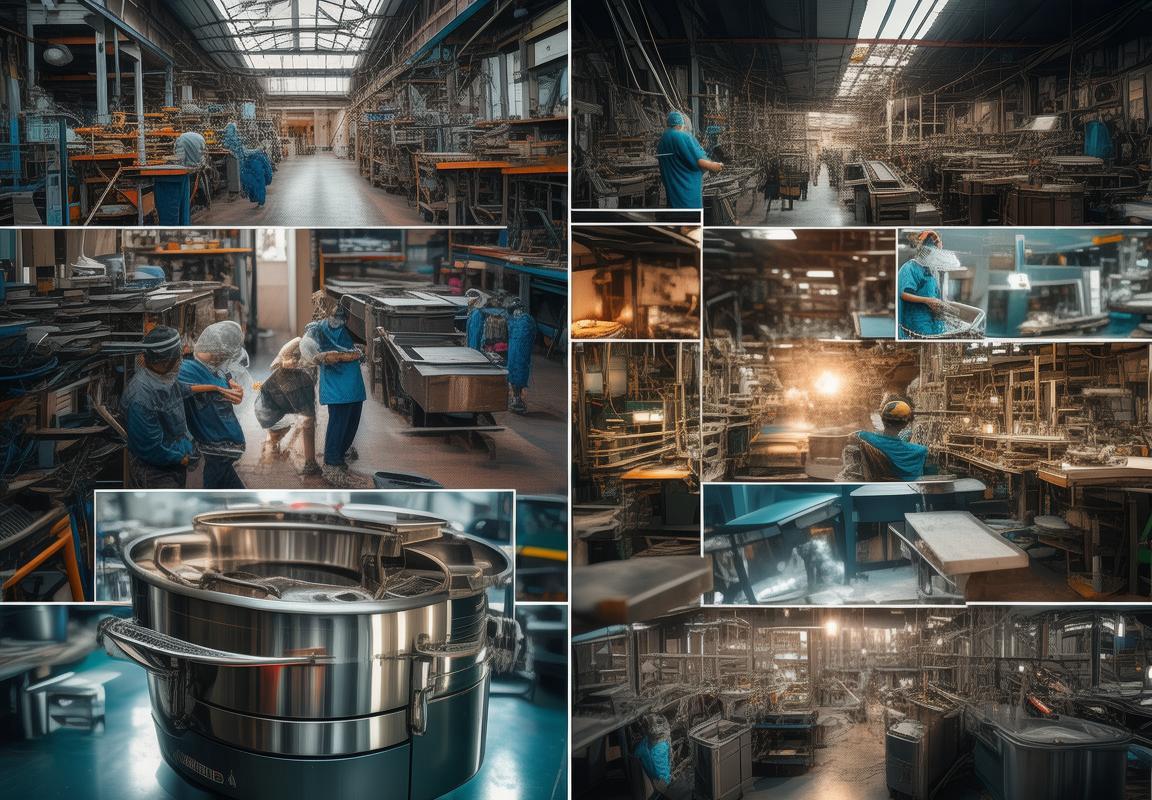
The Evolution of Hot Air Cookers
The journey of the hot air cooker, from its humble beginnings to the sleek appliances we know today, is a testament to human ingenuity and the relentless pursuit of convenience. Once a staple in the kitchens of the wealthy, these ovens have now become a common sight in homes around the world. The evolution of the hot air cooker is a story of innovation, efficiency, and a deep understanding of culinary needs.
In the early 19th century, the concept of cooking with hot air was first introduced. These early versions were quite primitive, often resembling a large, round metal drum with a small chimney. They were inefficient and required constant monitoring to ensure even cooking. Despite their limitations, they were a significant step forward from the traditional open fire cooking methods of the time.
As technology advanced, the design of hot air cookers began to evolve. The introduction of a fan to circulate the hot air more evenly marked a significant milestone. This innovation allowed for a more consistent and quicker cooking process, making these cookers more appealing to a wider audience. The early 20th century saw the emergence of the modern hot air oven, which featured a more streamlined design and better heat distribution.
The mid-20th century brought about further advancements. The introduction of thermostatic controls allowed users to set specific temperatures, ensuring that food was cooked to perfection without the need for constant supervision. This not only made cooking more convenient but also reduced the risk of burning or undercooking dishes.
Another key development was the inclusion of various cooking modes, such as convection, which used a fan to circulate hot air around the food, leading to more even cooking and faster results. The addition of a timer function also allowed users to start cooking and leave the kitchen, making the hot air cooker a truly hands-off appliance.
As the years went by, manufacturers started to focus on aesthetics and user-friendliness. The sleek, stainless steel designs of the 1960s and 1970s were a stark contrast to the bulky, utilitarian models of the past. Modern hot air cookers now come in a variety of colors and finishes, catering to different tastes and kitchen decor.
The rise of energy-efficient appliances has also played a role in the evolution of hot air cookers. Newer models are designed to use less energy while still providing the same, if not better, cooking performance. This focus on sustainability has not only helped consumers save money on their utility bills but also reduced the environmental impact of kitchen appliances.
In recent years, the integration of smart technology has taken hot air cookers to a new level. Many modern models are equipped with Wi-Fi capabilities, allowing users to control their ovens remotely through their smartphones. This feature is particularly useful for those who want to start cooking before they arrive home or for those who prefer to monitor their meals while they’re cooking.
The evolution of the hot air cooker has also seen an increase in functionality. Some models now come with features like pre-programmed cooking settings for various types of dishes, including pizza, roast, and even defrosting. Others include features like a rotisserie function, which allows for the preparation of juicy, perfectly roasted meats.
Despite these advancements, the core purpose of the hot air cooker remains the same: to provide a convenient and efficient way to cook a wide range of dishes. The evolution of the hot air cooker is a story of continuous improvement, where each innovation builds upon the last, making our lives a little bit easier and our cooking a little bit better.
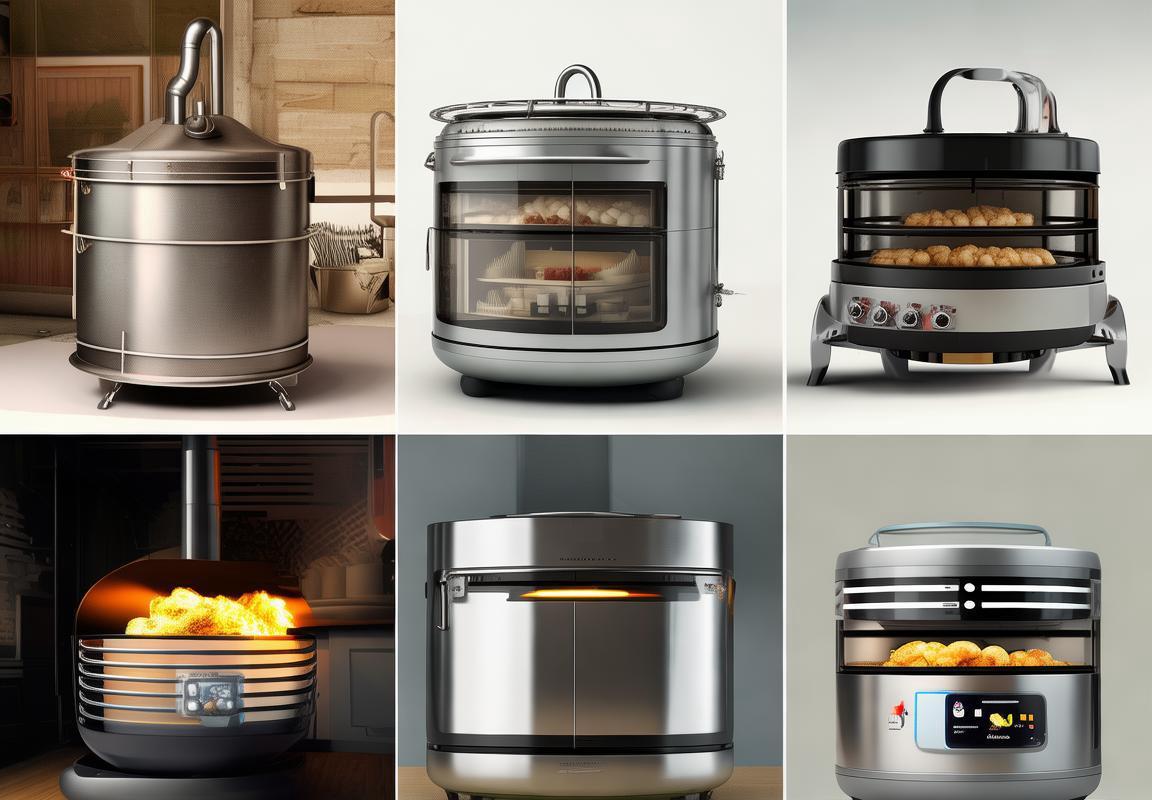
How Hot Air Cookers Work
Hot air cookers, often overlooked in the shadow of their countertop counterparts, have a fascinating history and a unique method of cooking that sets them apart. Understanding how these appliances work is a journey through the science of heat transfer and the evolution of kitchen technology.
The heart of a hot air cooker lies in its ability to distribute heat evenly throughout the cooking space. Unlike conventional ovens that rely on radiant heat from a heating element, hot air cookers use a fan to circulate warm air. This fan, usually mounted at the back of the oven, draws cool air in at the bottom, heats it over a heating element, and then forces it upwards through the cooking chamber.
As the air is heated, it expands and becomes less dense, causing it to rise. This natural convection process is the key to the even cooking temperatures that hot air cookers are known for. The air then descends, replacing the cooler air that has left the chamber, creating a continuous cycle that ensures the heat is evenly distributed.
One of the standout features of hot air cookers is their ability to cook a variety of foods without the need for added fat. The fan and heating element work together to circulate the air, which means that the food is surrounded by a blanket of warm air, promoting healthy cooking methods. This is particularly beneficial for those who are health-conscious or following low-fat diets.
The cooking process in a hot air cooker is straightforward. Once the desired temperature is reached, the user simply places the food inside. The fan ensures that the heat is maintained, and the air circulation prevents hot spots, which can lead to uneven cooking. This is particularly advantageous when cooking large cuts of meat or when baking items that require precise temperature control, such as cakes or pastries.
Another interesting aspect of how hot air cookers work is their efficiency. Because the air is constantly moving, it reduces the cooking time compared to conventional ovens. This is especially noticeable when roasting or baking, as the food cooks more quickly and evenly. This efficiency also means that hot air cookers can be more energy-efficient, as they do not need to maintain the same high temperatures for extended periods.
The design of hot air cookers also plays a crucial role in their cooking performance. The walls of the cooking chamber are often made of materials that are good insulators, such as glass or ceramic. This helps to retain the heat and prevent it from escaping, ensuring that the air remains warm and the cooking process continues smoothly.
Inside the cooking chamber, there are often shelves or racks that can be adjusted to accommodate different types of cookware. These racks help to maintain the distance between the food and the heating element, allowing for better air circulation and temperature distribution. Some models even come with rotisseries, which can be inserted to cook larger items, like whole turkeys, by rotating them to ensure even cooking.
Despite their simplicity, hot air cookers offer a wide range of cooking functions. They can be used for roasting, baking, broiling, and even air frying. The air frying function uses a high-speed fan to circulate hot air around the food, creating a crispy outer layer while cooking the inside. This innovative feature has gained popularity for its ability to produce similar results to traditional deep-frying with significantly less oil.
In terms of technology, modern hot air cookers often come with programmable settings and timers. Users can set the desired temperature and cooking time, and the cooker will automatically turn off when the food is ready. This not only adds convenience but also ensures that the food is cooked to perfection without the need for constant monitoring.
The use of hot air cookers is not limited to residential kitchens. They are also popular in commercial settings, such as restaurants and catering services, where their efficiency and even cooking make them ideal for high-volume cooking. Their versatility allows chefs to prepare a wide array of dishes, from simple roasts to elaborate desserts, with ease and consistency.
In conclusion, the operation of hot air cookers is a testament to the power of convection and the ingenuity of kitchen appliance design. By understanding the science behind their function, one can appreciate the efficiency, health benefits, and convenience that these appliances bring to the modern kitchen.
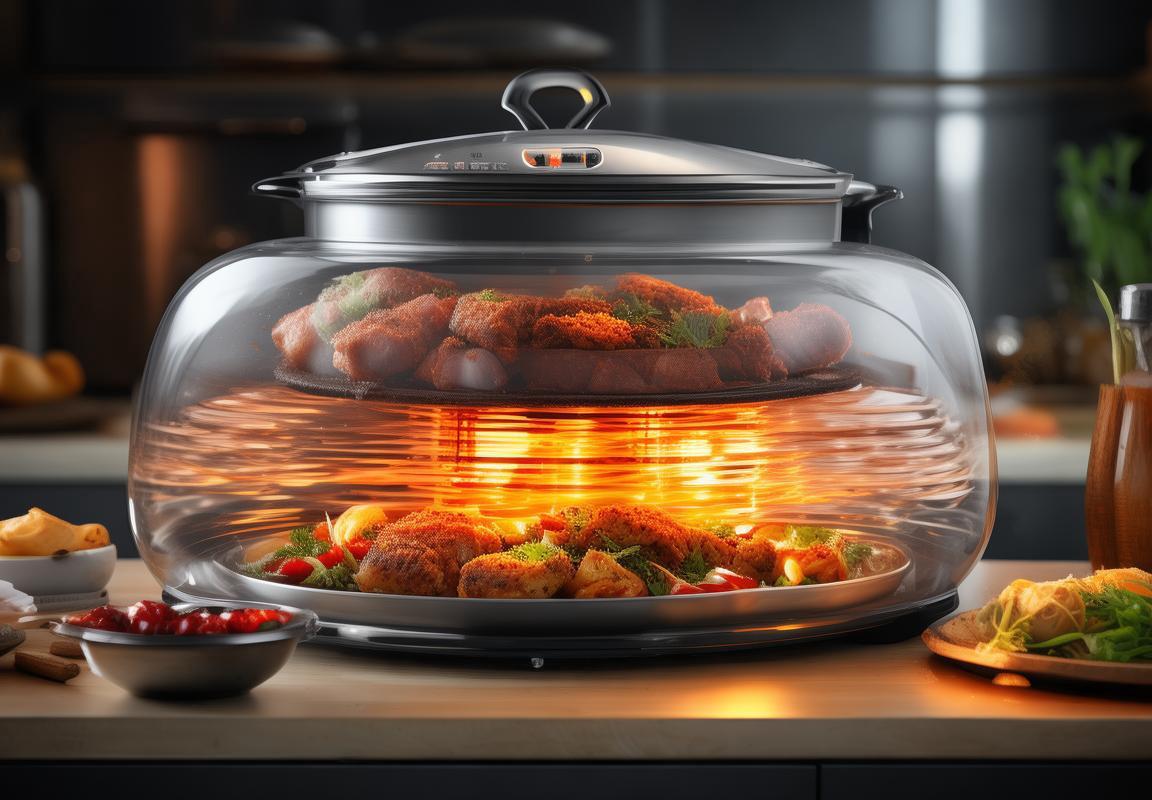
The Production Process in a Hot Air Cooker Factory
In a hot air cooker factory, the production process is a symphony of precision and craftsmanship, where each step is meticulously carried out to ensure that the end product meets the highest standards. Here’s a glimpse into the intricate journey of how a hot air cooker is brought to life:
Materials are meticulously selected and sourced, with an emphasis on durability and safety. Steel, aluminum, and sometimes stainless steel are commonly used for their heat resistance and ability to distribute heat evenly. These metals are tested for purity and quality before they are even considered for use in the production line.
The shaping and cutting of the metal components are performed with state-of-the-art machinery. Sheets of metal are rolled into the necessary shapes, such as the body of the cooker, using hydraulic presses that can exert immense pressure. Precision cutting tools ensure that every piece is the correct size and shape, often with intricate designs that are crucial for the cooker’s functionality.
Welding is a critical stage in the production process. Skilled welders use advanced techniques to join the metal pieces together, creating a seamless and strong bond. MIG (Metal Inert Gas) and TIG (Tungsten Inert Gas) welding are commonly employed for their precision and the ability to produce high-quality welds. The welds are inspected for any defects or weaknesses, ensuring the structural integrity of the cooker.
Once the metal components are joined, they are coated to protect against corrosion and enhance the aesthetic appeal. Paint is applied using a variety of methods, including electrostatic spray painting for even coverage and durability. Different colors and finishes are available, and customers can often choose from a range of options.
The next step involves the assembly of the internal components. This includes the heating elements, which are designed to provide consistent heat distribution. The elements are mounted within the body of the cooker, and their placement is crucial for even cooking. Thermostats and temperature control systems are also integrated to ensure the cooker can maintain precise cooking temperatures.
Safety features are integrated into the design from the outset. Overheat protection mechanisms, such as thermal fuses, are installed to prevent the cooker from overheating. These components are tested for their reliability and are designed to fail safely in the event of a fault.
After assembly, the cooker is placed in the baking or curing oven. This process involves exposing the painted surface to high temperatures, which helps the paint to harden and bond with the metal. The curing process not only strengthens the paint but also removes any solvents and reduces the risk of flaking or chipping.
Quality control is a paramount aspect of the production process. Cookers are subjected to a series of tests to ensure they meet the required safety and performance standards. This includes checking for leaks, ensuring proper heating and cooling functions, and verifying that the temperature control is accurate. Any defective units are identified and removed from the line.
Before the cooker is packaged, it undergoes a final visual inspection. This step ensures that all components are correctly installed, that there are no visible defects, and that the cooker is ready for sale. Packaging materials are carefully chosen to protect the cooker during transportation and storage.
The cooker is then placed into its protective packaging, which may include foam inserts, bubble wrap, or custom boxes. This packaging is designed not only to safeguard the cooker but also to enhance its appeal on the shelves.
Finally, the finished hot air cookers are transported to distribution centers or directly to retailers. The entire production process is designed to be efficient, minimizing waste and maximizing output while maintaining the highest quality standards.
Throughout this intricate process, the factory employs a team of skilled workers, engineers, and quality assurance specialists. Each person plays a crucial role in the production of a hot air cooker, from the initial design to the final packaging, ensuring that the end product is not just a kitchen appliance but a testament to human ingenuity and craftsmanship.
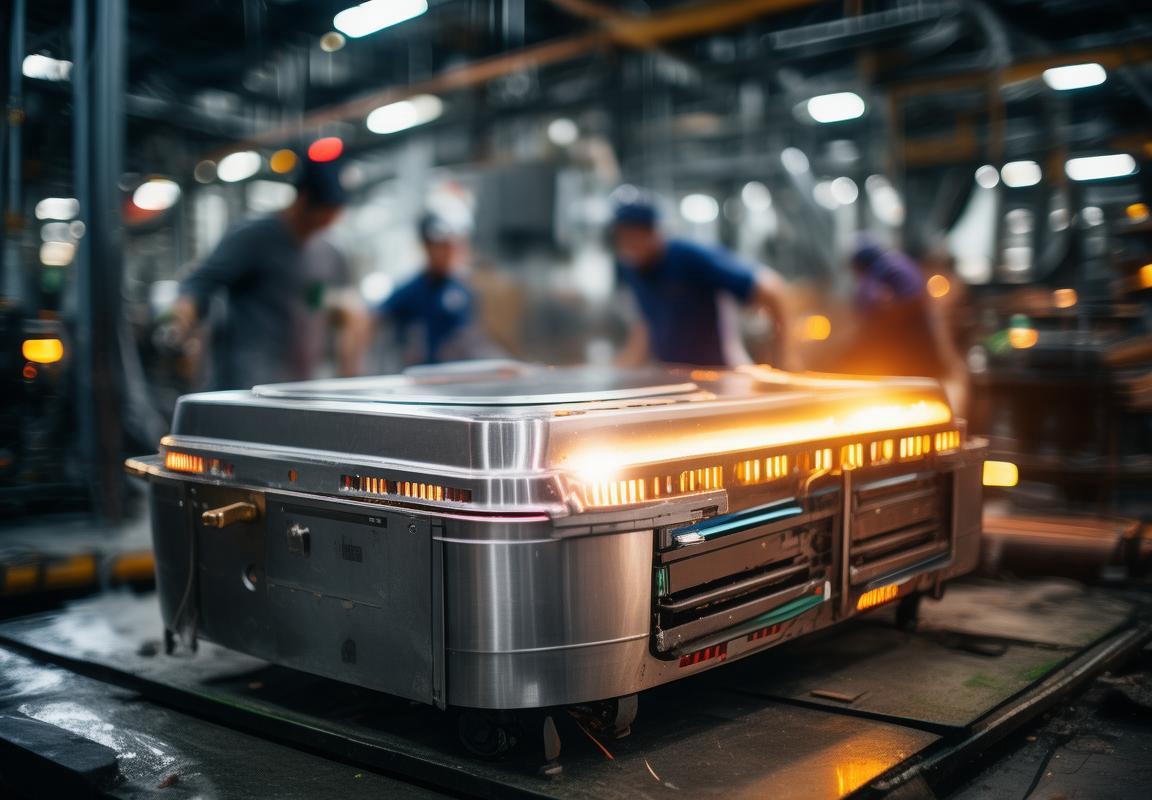
Innovations in Hot Air Cooker Manufacturing
In recent years, the manufacturing of hot air cookers has seen a surge of innovation, transforming these kitchen appliances into more efficient, user-friendly, and eco-conscious devices. From advanced heat distribution systems to smart features, here’s a glimpse into the innovative strides being made in hot air cooker manufacturing.
The introduction of digital temperature controls has revolutionized the way hot air cookers operate. Users can now set precise temperatures, ensuring that food is cooked to perfection every time. These controls have replaced the old-fashioned dials and switches, offering a more accurate and intuitive cooking experience.
One of the most significant innovations is the use of convection fans. These fans circulate hot air around the cooking chamber, allowing for more even cooking and reducing the cooking time. This technology is particularly beneficial for baking, where a consistent temperature is crucial for achieving a golden brown crust and a moist interior.
The materials used in hot air cooker manufacturing have also seen a transformation. Modern cookers are now constructed with high-quality stainless steel, which not only adds to the durability but also enhances the aesthetic appeal of the appliance. The use of non-stick coatings inside the cooking chamber has made cleaning easier, reducing the need for excessive scrubbing and preserving the integrity of the surface.
Energy efficiency is another area where innovations have made a substantial impact. Modern hot air cookers are designed to minimize energy consumption, thanks to improved insulation and more efficient heating elements. Some models now come with eco modes that automatically adjust the temperature and fan speed to maintain a steady cooking environment while saving energy.
Smart technology has also found its way into hot air cooker manufacturing. Cookers with built-in smart sensors can monitor and adjust the cooking process in real-time, providing users with alerts when the food is ready or when the appliance is in need of maintenance. This connectivity allows for greater control and convenience, as users can remotely monitor and control their cookers through smartphones or tablets.
In terms of design, hot air cookers have evolved to be more compact and space-saving. The development of vertical models has allowed for a more efficient use of kitchen space, making these appliances suitable for smaller kitchens or for those who prefer a sleeker look. Additionally, the inclusion of foldable legs or removable parts further enhances the appliance’s adaptability to different kitchen layouts.
Safety features have also been a focal point in the innovation of hot air cookers. Modern cookers come with features like automatic shut-off, which activates if the appliance is left unattended or if the temperature exceeds safe levels. This not only protects the user but also ensures the appliance’s longevity by preventing overheating.
Moreover, the customization options have expanded, with some manufacturers offering a variety of colors and finishes to suit different kitchen decors. Users can now choose from classic white and black to more vibrant colors like red, blue, or even copper.
The inclusion of multi-functional capabilities has also been a key innovation. Many hot air cookers now come with additional features such as rotisserie cooking, grilling, and even dehydrating, turning a single appliance into a versatile kitchen tool.
In the realm of eco-conscious manufacturing, there has been a shift towards using sustainable materials and reducing waste. Recycled metals and biodegradable packaging are becoming more common, reflecting a commitment to environmental responsibility.
Lastly, the rise of modular cookers has allowed for customization that goes beyond aesthetics. Users can now purchase different modules, such as baking pans, roasting racks, and additional shelves, to tailor their hot air cooker to their specific needs and preferences.
These innovations in hot air cooker manufacturing represent a commitment to progress and improvement. As technology continues to advance, we can expect to see even more creative and efficient solutions being developed, making the hot air cooker an even more valuable asset in modern kitchens.
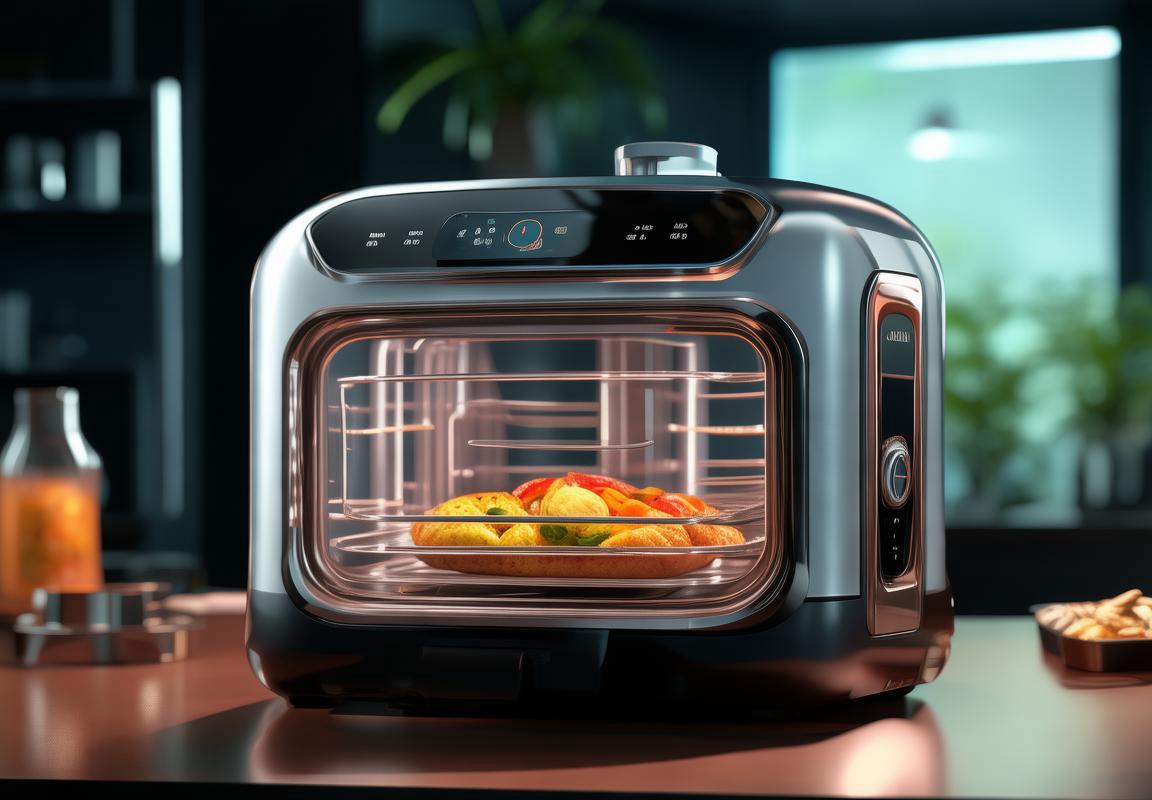
Quality Control and Safety Standards
In a world where safety and quality are paramount, the hot air cooker manufacturing industry has implemented rigorous standards to ensure that every unit that leaves the factory is not only reliable but also safe for consumers. This section delves into the intricate process of quality control and safety standards that govern the production of these appliances.
The journey begins with the selection of materials. High-quality stainless steel, known for its durability and resistance to corrosion, is typically chosen for the construction of hot air cookers. Each material is inspected for purity and compliance with industry specifications to prevent any defects from the outset.
Once the materials are approved, they move through a meticulous cutting process. Precision cutting machines are used to shape the steel into the necessary components. Each cut is monitored to ensure accuracy, as even a slight deviation can affect the performance and safety of the final product.
After cutting, the components are together, a process that requires extreme care. Welders are trained to maintain consistent temperatures and pressure to prevent weaknesses in the joints. Post-welding inspections are conducted to detect any anomalies that could compromise the integrity of the cooker.
The assembled cooker then undergoes a series of tests to simulate real-world use. These include pressure tests to ensure that the appliance can withstand the heat and pressure of cooking without leaking. Leak tests are also performed to guarantee that the cooker is airtight, which is crucial for even heat distribution.
Safety features are integrated into the design of hot air cookers from the start. For instance, automatic shut-off mechanisms are installed to prevent overheating, which can lead to fires. These mechanisms are calibrated to activate at precise temperatures, providing an added layer of protection.
Electrical components, such as heating elements and control panels, are subject to rigorous testing as well. They must be able to withstand the heat generated during cooking and function reliably over the appliance’s lifespan. Electrical engineers use specialized equipment to measure resistance, voltage, and current to ensure these components meet safety standards.
The exterior of the cooker is treated with a high-quality, heat-resistant paint. This paint not only enhances the aesthetic appeal but also provides a protective barrier against corrosion. Paint quality is tested for adherence, durability, and resistance to heat, ensuring that the finish will not peel or crack under normal cooking conditions.
Every hot air cooker is also tested for compliance with fire safety regulations. This involves exposing the appliance to controlled flames and heat to simulate potential fire hazards. If the cooker can withstand these conditions without catching fire, it is deemed safe for use.
In addition to physical testing, safety standards also encompass user manuals and warnings. These documents must be clear, concise, and easily accessible. They provide instructions on safe operation, maintenance, and what to do in the event of an emergency.
The quality control process doesn’t end with the initial testing. Cookers are also monitored throughout their lifecycle. Regular maintenance checks and service intervals are recommended to keep the appliance in optimal condition. This proactive approach helps to prevent accidents and ensures that the cooker remains safe for the consumer.
Lastly, the hot air cooker factory adheres to international safety standards, which are reviewed and updated regularly. This includes certifications from organizations such as the Underwriters Laboratories (UL) and the International Electrotechnical Commission (IEC). These certifications are a testament to the factory’s commitment to safety and quality, assuring consumers that their appliance meets the highest standards of safety and reliability.
Throughout the production process, there is a relentless focus on detail, from the selection of materials to the final product inspection. The factory’s quality control and safety standards are not just about meeting regulations; they are about ensuring that every hot air cooker that reaches the market is a testament to excellence in engineering and craftsmanship.
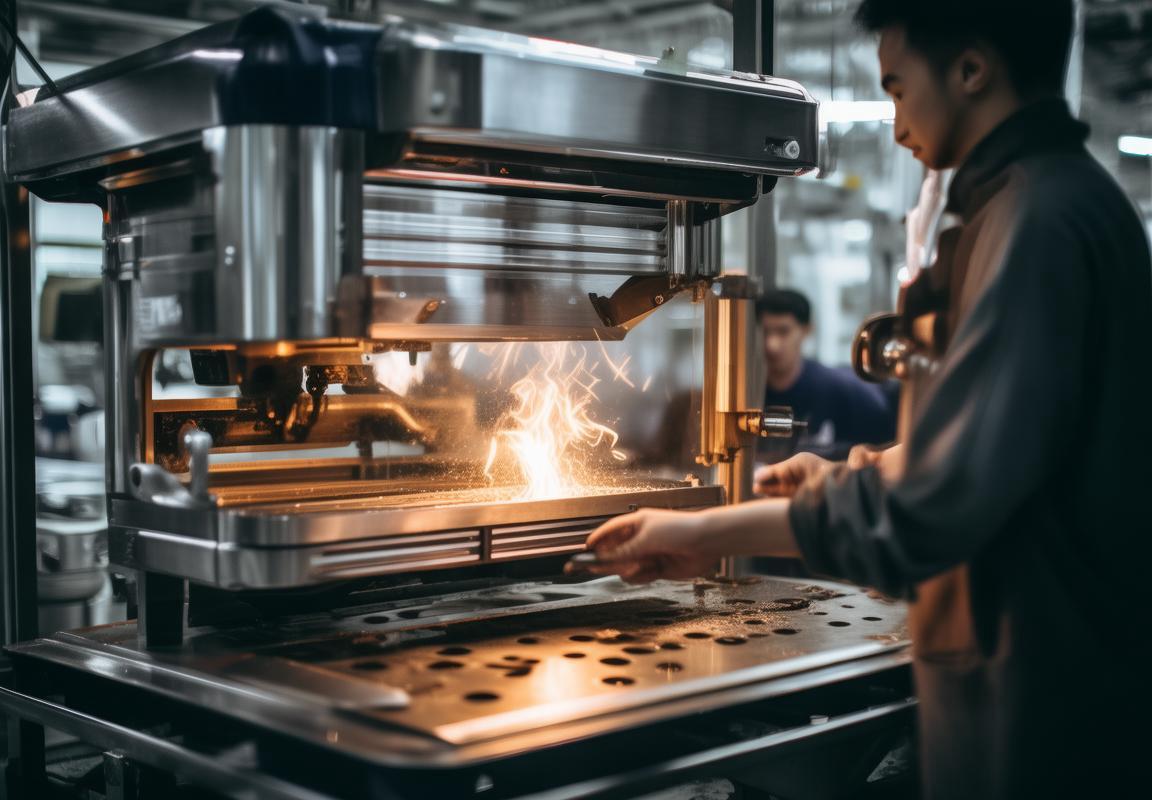
The Role of Technology in Hot Air Cooker Factories
In hot air cooker factories, technology plays a pivotal role in shaping the efficiency and output of the manufacturing process. From the initial design to the final assembly, the integration of advanced tech has revolutionized how these appliances are made. Let’s delve into the various aspects of technology’s influence on these factories.
Automated Assembly Lines: The heart of any hot air cooker factory is its assembly line, where components are pieced together to form a functional appliance. Today, these lines are equipped with automated robots that handle tasks with precision, reducing human error and increasing production speed. These machines can place electronic components, weld metal parts, and even perform quality checks, all with remarkable consistency.
CAD and 3D Modeling: Designing hot air cookers begins with computer-aided design (CAD) software. Engineers use these tools to create detailed 3D models of each part, allowing for better visualization and the ability to make adjustments before the manufacturing process starts. This not only streamlines the design phase but also minimizes the need for physical prototypes, saving time and resources.
Advanced Materials Testing: Ensuring the durability and safety of hot air cookers is crucial. Technology allows for the use of advanced testing equipment to evaluate materials like stainless steel, aluminum, and plastic. These tests can determine the strength, heat resistance, and overall lifespan of each component, ensuring that only the highest-quality materials make it into the final product.
Energy Efficiency Monitoring: With growing concerns about environmental impact, technology has been employed to monitor and improve energy efficiency in hot air cooker factories. Smart systems can track energy consumption, identify inefficiencies, and suggest ways to reduce waste. This not only helps the factory operate more sustainably but also cuts down on operational costs.
Machine Learning and Predictive Maintenance: Factories are implementing machine learning algorithms to predict when equipment may fail or require maintenance. By analyzing data from sensors embedded in machinery, these systems can schedule maintenance before a breakdown occurs, minimizing downtime and keeping the production line running smoothly.
Robotic Process Automation (RPA): RPA technology is being used to automate repetitive tasks, such as data entry or inventory management. This not only frees up human workers to focus on more complex tasks but also reduces the likelihood of human error in these critical areas.
Supply Chain Management Software: Keeping track of a vast array of parts and components, as well as managing the supply chain, is a challenge in any factory. Advanced software solutions help coordinate the flow of materials, track inventory levels, and ensure that the right parts are available at the right time. This integration can prevent delays and optimize production schedules.
Quality Assurance and Testing Equipment: Ensuring that each hot air cooker meets safety and quality standards is paramount. High-tech testing equipment, such as thermal imagers and vibration analyzers, can detect issues like overheating or loose connections that might not be visible to the naked eye. These tools help ensure that every unit that leaves the factory is up to par.
Remote Monitoring and Control: With the advent of the internet of things (IoT), factory managers can remotely monitor and control the production process. This allows for real-time adjustments to be made, even when the manager is not physically present on the factory floor. It also means that any issues can be addressed immediately, preventing minor problems from escalating into major setbacks.
Energy Management Systems: Factories are adopting energy management systems that optimize the use of energy across the entire facility. These systems can control heating, ventilation, and air conditioning (HVAC) systems, lighting, and other energy-consuming processes, ensuring that energy is used efficiently without compromising the quality of the cooking appliances.
Sustainability Initiatives: Technology also plays a role in promoting sustainability within hot air cooker factories. From the use of renewable energy sources to the implementation of recycling programs, tech solutions are being used to reduce the environmental footprint of the manufacturing process.
In conclusion, technology has become an indispensable part of hot air cooker factories, enhancing every aspect of the production process from design to delivery. The integration of cutting-edge tech continues to push the boundaries of efficiency, quality, and sustainability, ensuring that these factories remain at the forefront of the appliance industry.
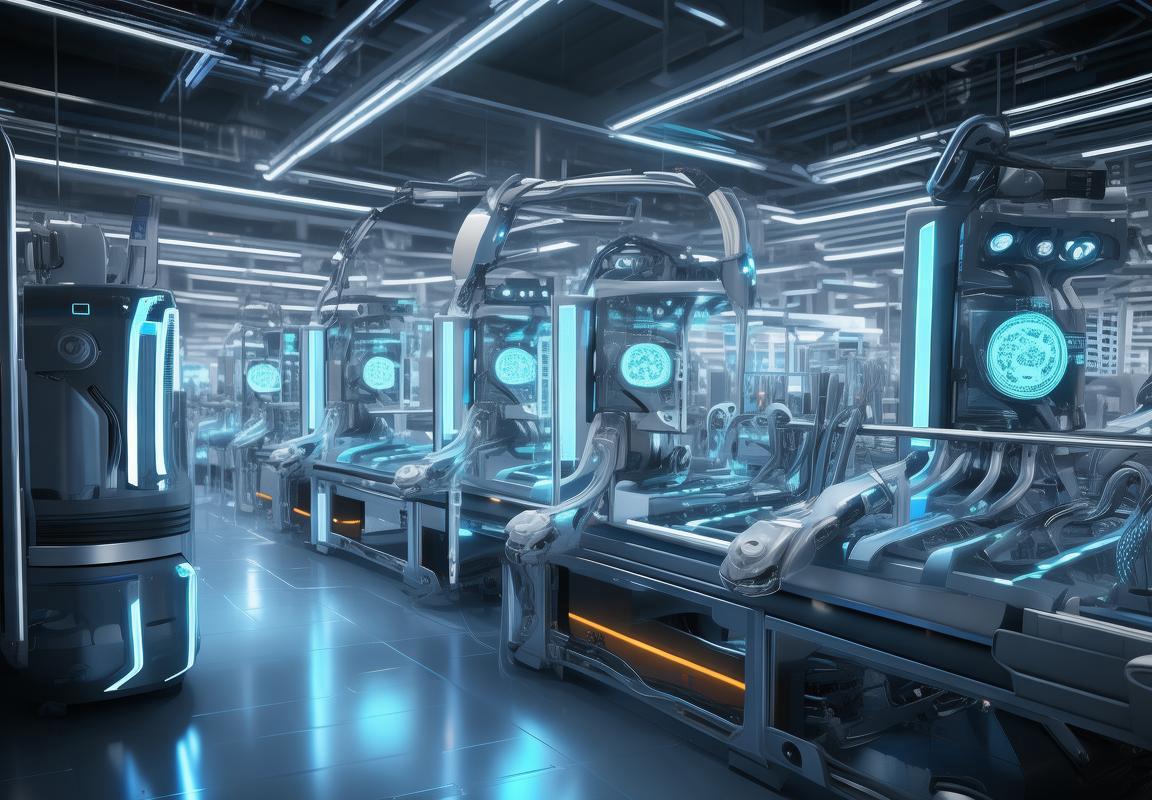
Environmental Considerations in Factory Operations
In today’s world, environmental consciousness is paramount, and factory operations are no exception. The manufacturing of hot air cookers, while providing efficient cooking solutions, also demands a careful consideration of environmental impact. Here’s a closer look at the environmental aspects that are integral to factory operations:
Energy EfficiencyManufacturing hot air cookers involves the use of various energy sources, from electricity to gas. Factories are increasingly investing in energy-efficient technologies to reduce their carbon footprint. This includes the installation of LED lighting, which consumes less power than traditional bulbs, and the implementation of energy-saving machinery that optimizes energy use without compromising productivity.
Waste ManagementThe production process generates waste, from packaging materials to excess metal and plastic. Responsible factories have stringent waste management protocols in place. They recycle and reuse materials whenever possible, ensuring that waste is minimized. Metal shavings and plastic scraps are collected and sent to recycling facilities, while organic waste might be composted for use in agricultural processes.
Water ConservationWater is a critical resource in any manufacturing setting, and hot air cooker factories are no different. Advanced water-saving technologies are employed to reduce consumption. This can range from the use of high-efficiency water pumps to recycling water used in cleaning processes. By minimizing water usage, factories contribute to the preservation of this vital resource.
Emissions ControlThe burning of fossil fuels in industrial processes releases harmful emissions into the atmosphere. Hot air cooker factories are adopting cleaner technologies to control these emissions. This includes the installation of exhaust systems that capture pollutants and the use of alternative energy sources, such as solar panels and wind turbines, to power certain operations.
Sustainable SourcingThe raw materials used in hot air cooker manufacturing, such as metals and plastics, are sourced from various suppliers. Responsible factories are now prioritizing sustainable sourcing, ensuring that their materials come from suppliers who adhere to environmentally friendly practices. This includes using recycled materials and supporting suppliers who are committed to reducing their ecological impact.
Green Building DesignFactory buildings themselves are being designed with sustainability in mind. The use of green roofs, which can insulate the building and absorb rainwater, is becoming more common. Natural ventilation and lighting are also incorporated to reduce the need for artificial energy sources. These design elements not only contribute to a healthier working environment but also help to reduce the overall energy consumption of the factory.
Community EngagementBeyond the factory walls, environmental responsibility extends to the local community. Factories are engaging with neighbors through various initiatives. These can include tree-planting programs, supporting local environmental organizations, or educating the community about sustainable practices. By fostering a positive relationship with the community, factories can also improve their own reputation and the perception of their environmental efforts.
Employee AwarenessEmployees are a key part of the environmental equation. Factories are implementing training programs to raise awareness about sustainable practices. This education can range from understanding the importance of recycling to recognizing the impact of energy consumption in daily operations. Empowered employees can often identify ways to reduce waste and energy use, making them an invaluable asset in environmental efforts.
Continuous ImprovementSustainability is not a one-time initiative but a continuous journey. Hot air cooker factories are committed to ongoing improvement. This involves regularly reviewing and updating environmental policies, investing in new technologies, and setting new goals for reducing emissions and waste. The drive for continuous improvement ensures that factories remain at the forefront of environmental responsibility.
In conclusion, the environmental considerations in factory operations for hot air cooker manufacturing are multifaceted. From energy efficiency and waste management to emissions control and community engagement, these factories are taking significant steps to minimize their ecological impact. As the world becomes more environmentally conscious, these efforts are not only crucial for the health of our planet but also for the long-term success and reputation of these manufacturing facilities.
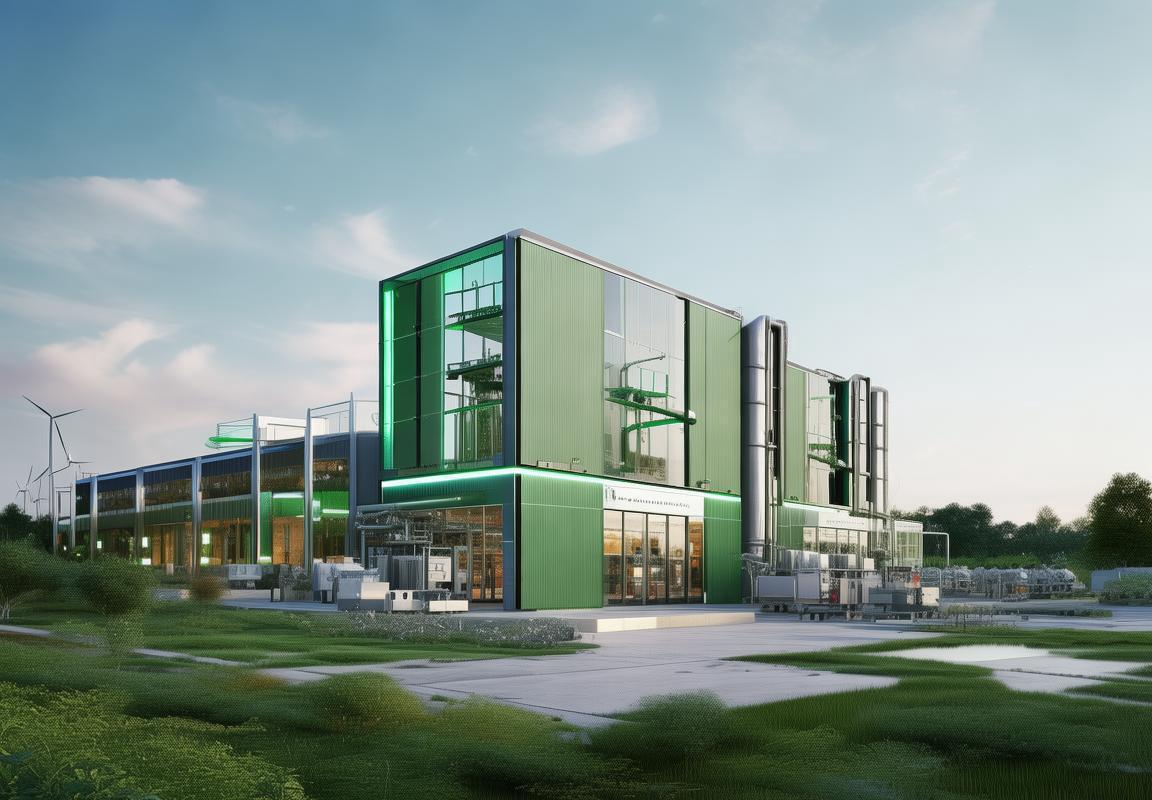
The Impact of Hot Air Cookers on the Market
In the competitive landscape of kitchen appliances, hot air cookers have made a significant mark. They’ve transformed the way we cook, offering convenience and efficiency. The market’s response to these innovative devices has been nothing short of remarkable. Here’s a closer look at the impact hot air cookers have had on the market.
The rise of the health-conscious consumer has played a pivotal role in the popularity of hot air cookers. With a growing emphasis on nutritious and homemade meals, these appliances have become a staple in many households. Their ability to cook food with minimal oil has made them a favorite among those looking to maintain a healthy lifestyle.
Moreover, the versatility of hot air cookers has expanded their appeal. They can roast, bake, and even air-fry, making them a one-stop solution for various cooking needs. This multifunctionality has led to a surge in demand, as consumers seek appliances that can cater to their diverse culinary preferences without cluttering their kitchen counters.
The market has also seen a shift in consumer behavior, with an increasing preference for smart and energy-efficient appliances. Hot air cookers, with their digital controls and energy-saving features, have capitalized on this trend. The integration of smart technology, allowing users to monitor and control their cookers remotely, has further boosted their market appeal.
Retailers have responded to the demand by offering a wide array of hot air cookers, ranging from budget-friendly models to premium, high-tech versions. This diversity has allowed consumers to choose based on their specific needs and budgets, further driving market growth.
In the commercial sector, hot air cookers have found their way into restaurants, cafes, and catering services. Their ability to cook large volumes of food quickly and evenly has made them a favorite among chefs looking to streamline their operations. This has opened up new markets for manufacturers, as they cater to both residential and commercial clients.
The impact of hot air cookers on the market extends beyond consumer and commercial sectors. The appliance’s popularity has spurred the development of related products, such as specialized baking trays, cooking accessories, and even recipes tailored for these cookers. This has created a new ecosystem around hot air cookers, with manufacturers, retailers, and even content creators benefiting from the trend.
Additionally, the environmental movement has influenced the market dynamics. As consumers become more aware of their carbon footprint, they are gravitating towards appliances that are not only energy-efficient but also sustainable. Hot air cookers, with their lower energy consumption compared to traditional ovens, have positioned themselves as eco-friendly options, further enhancing their market appeal.
Furthermore, the global pandemic has accelerated the shift towards home cooking. With more people spending extended periods at home, the demand for kitchen appliances, including hot air cookers, has surged. This sudden increase in demand has created opportunities for manufacturers to expand their production capabilities and explore new markets.
The market for hot air cookers has also been influenced by cultural factors. In some regions, traditional cooking methods are slowly being replaced by modern appliances, leading to a growing interest in hot air cookers. This cultural shift has contributed to the appliance’s global reach and has opened doors for international manufacturers.
In conclusion, the impact of hot air cookers on the market is undeniable. Their versatility, health benefits, energy efficiency, and the growing trend towards smart technology have all contributed to their rise. As the market continues to evolve, it’s clear that hot air cookers will remain a key player in the world of kitchen appliances.
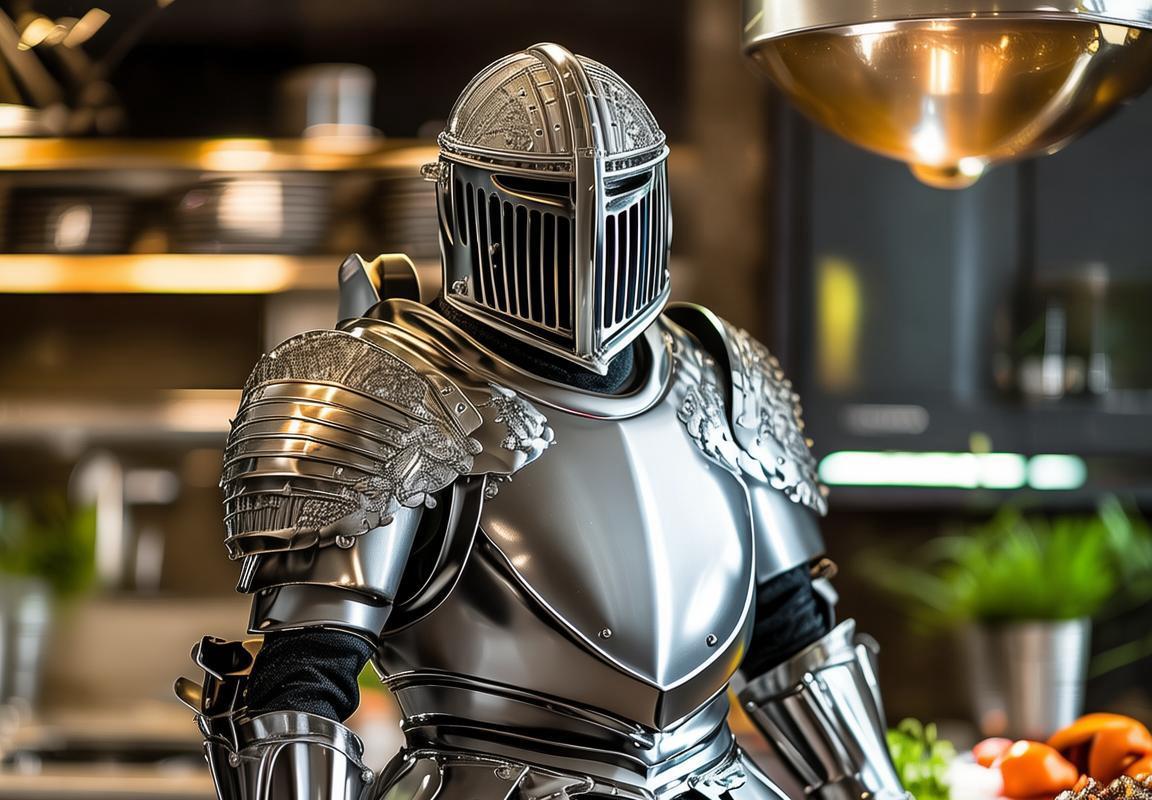
Employee Skills and Training
In a hot air cooker factory, the workforce is the backbone of the operation. The skills and training of employees play a crucial role in ensuring the quality and efficiency of the products. From the assembly line to quality assurance, each team member contributes to the overall success of the company. Here’s a closer look at the importance of employee skills and training in such a factory.
Employees in a hot air cooker factory are often divided into several specialized roles, each requiring a unique set of skills. For instance, there are those who work on the assembly line, meticulously putting together the various components of the cookers. These workers must have a keen eye for detail and the ability to follow complex instructions precisely.
Assembly line workers are trained to handle delicate parts and to understand the importance of a secure fit and function. They learn to use precision tools and understand the importance of maintaining a clean and organized workspace. This not only ensures the longevity of the tools but also minimizes the risk of errors during assembly.
Beyond the assembly line, there are technicians who specialize in the electrical and mechanical aspects of the cookers. These individuals need a strong understanding of electrical circuits, thermal dynamics, and mechanical engineering. Their training involves both theoretical knowledge and hands-on experience with various types of cookers.
Quality control is another critical area where skilled employees are essential. Inspectors must be able to identify defects in materials or manufacturing processes and communicate these issues to the relevant teams. Their training includes learning how to use inspection tools, understanding industry standards, and developing a keen sense of observation.
Safety is paramount in a factory environment, and employees must be well-trained to handle potential hazards. This includes understanding the proper use of personal protective equipment (PPE), such as gloves, goggles, and ear protection. Safety training also covers emergency procedures, fire safety, and the use of fire extinguishers.
In the realm of design and engineering, there’s a constant need for innovation and improvement. Employees in these roles are often required to have advanced degrees or certifications in their respective fields. They are responsible for creating new models of hot air cookers, improving existing designs, and ensuring that the products meet consumer demands and safety regulations.
Collaboration is key in a hot air cooker factory. Employees from different departments must work together to ensure that the production process runs smoothly. This requires effective communication skills, as well as the ability to adapt to changes and solve problems as they arise. Training programs often include workshops on teamwork and conflict resolution.
Moreover, the factory’s management understands the value of continuous learning. They invest in ongoing training sessions to keep employees up-to-date with the latest technologies and industry trends. These sessions might cover new software for design and engineering, updates on safety standards, or even courses on leadership and management for team leads and supervisors.
As the market evolves, so does the need for specialized skills. For example, with the rise of smart appliances, there’s a growing demand for employees who can program and troubleshoot electronic systems. This requires a different set of skills, including a strong understanding of coding and electronics.
In addition to technical skills, soft skills are equally important. Employees need to be able to work effectively under pressure, manage their time well, and maintain a positive attitude. These qualities are vital in a fast-paced factory environment where deadlines are common and precision is crucial.
The factory also recognizes the importance of employee well-being. They offer training on stress management, work-life balance, and even mental health awareness. This holistic approach to training and development helps to create a more satisfied and engaged workforce.
In conclusion, the skills and training of employees in a hot air cooker factory are integral to the success of the business. From the assembly line to quality control, each employee plays a part in the intricate process of creating a reliable and efficient product. By investing in their workforce, the factory not only ensures high-quality output but also fosters a culture of growth and innovation.
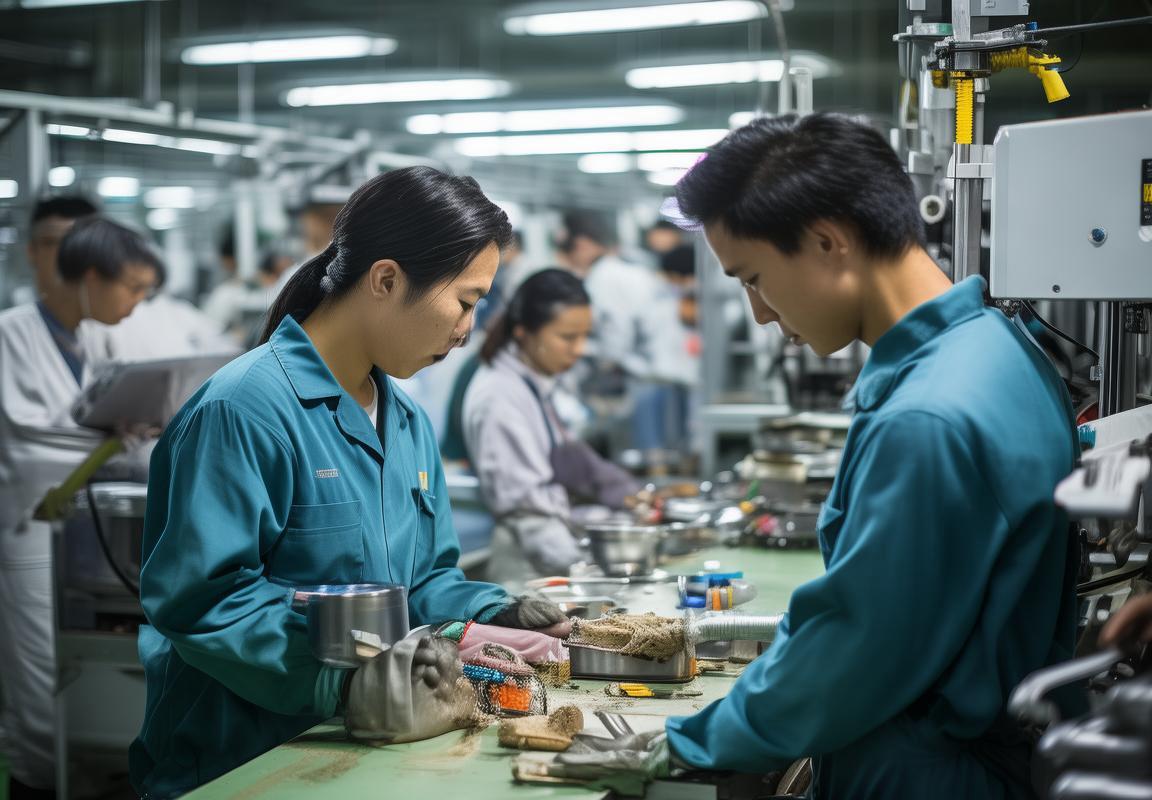
Conclusion: The Heartbeat of Modern Kitchen Appliances
In the world of modern kitchen appliances, the hot air cooker stands as a testament to innovation and efficiency. As we delve into the conclusion of this exploration, it’s clear that the heart of these appliances beats with the advancements and dedication that come from a combination of technology, craftsmanship, and environmental consciousness.
The journey of the hot air cooker from its humble beginnings to its current state as a staple in many kitchens reflects the evolution of technology and consumer needs. These appliances have not only changed the way we cook but have also become symbols of convenience and health.
In the realm of employee skills and training, the manufacturing of hot air cookers has become a blend of art and science. Workers are not just assembly-line operators; they are artisans who understand the intricacies of the manufacturing process. Their roles are multifaceted, requiring a keen eye for detail, technical knowledge, and a commitment to quality.
Training programs are rigorous and comprehensive, ensuring that each employee is well-versed in the latest techniques and safety protocols. From the initial design phase to the final quality check, every step is critical, and the training reflects this. Employees learn about the materials used, the importance of thermal insulation, and the precision required in electronic components.
The heart of a modern kitchen appliance, such as the hot air cooker, is not just its mechanical parts but also the passion and expertise of those who bring it to life. The training involves hands-on experience, where employees learn to assemble and disassemble cookers, diagnose issues, and perform maintenance. This not only ensures that the final product is of the highest quality but also equips the workforce with transferable skills that can be applied across various industries.
Innovation in hot air cooker manufacturing has led to the integration of smart technology, making these appliances more user-friendly and efficient. The development of new materials and manufacturing processes has allowed for cookers that are not only durable but also energy-saving and environmentally friendly. The market impact of these innovations is significant, as consumers seek appliances that offer both performance and sustainability.
The introduction of programmable settings, self-cleaning features, and energy-efficient designs has expanded the appeal of hot air cookers. They have become a preferred choice for those looking to reduce their carbon footprint while enjoying the convenience of modern cooking. The market response has been overwhelmingly positive, with sales figures reflecting the growing trend towards eco-conscious consumerism.
Safety standards in the production of hot air cookers are paramount. The adherence to strict regulations and quality control measures ensures that every cooker that leaves the factory is safe for use. From the selection of non-toxic materials to the implementation of safety features like temperature controls and automatic shut-offs, the focus is on protecting the end-user.
Environmental considerations have also become a crucial part of factory operations. Manufacturers are now more mindful of their ecological impact, implementing recycling programs, reducing waste, and sourcing materials responsibly. The commitment to sustainability is not just a trend but a reflection of the changing values within the industry.
In conclusion, the hot air cooker is more than just a kitchen appliance; it is a product of the collective efforts of skilled workers, innovative engineers, and environmentally conscious manufacturers. It represents the pinnacle of modern kitchen technology, offering convenience, efficiency, and peace of mind. As the heartbeat of modern kitchen appliances, the hot air cooker continues to evolve, adapting to the needs of a changing world while maintaining its status as a symbol of progress and excellence.